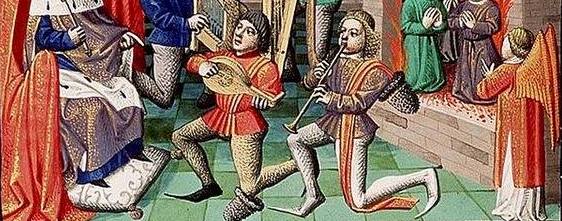
This is the fourth in a series of eight articles about the 71 stone and wood carvings of musicians created between 1330 and 1390 in Beverley Minster, a church in the East Riding of Yorkshire. Since Beverley Minster has more iconography of medieval musicians than any other surviving historical site, these articles are a survey of the musical life of 14th century England.
Having given the Minster’s history in the first article, described the medieval musicians of the arcades and triforium in the second article and those on the walls either side of the nave in the third article, here all the outstanding medieval stone and wood carvings are explored in the remaining parts of the church. We will see 14th century carvings of musicians playing bagpipes, hunting horn, vielles (medieval fiddles), harps, portative organs, psaltery, oliphants, and nakers. These carvings raise questions about: the history of the influential de Percy family from the Norman conquest to the English Civil War; the royal and military practice of blowing elephant horns; and the pre-eminence for medieval musicians of the fiddle, bagpipe, harp and portative organ.





